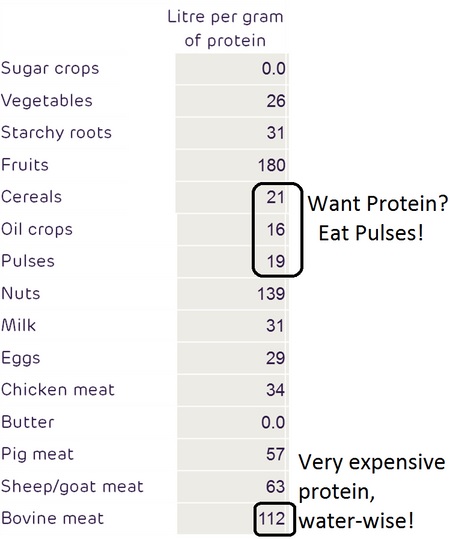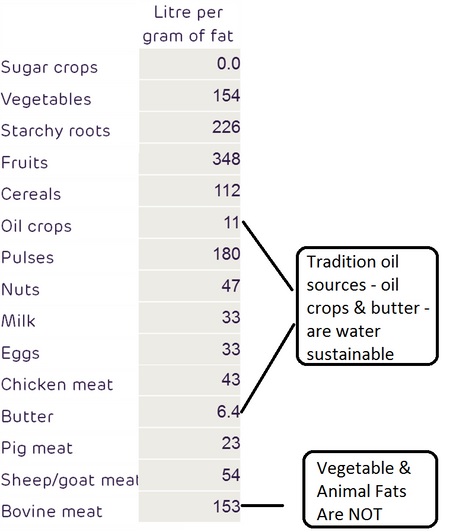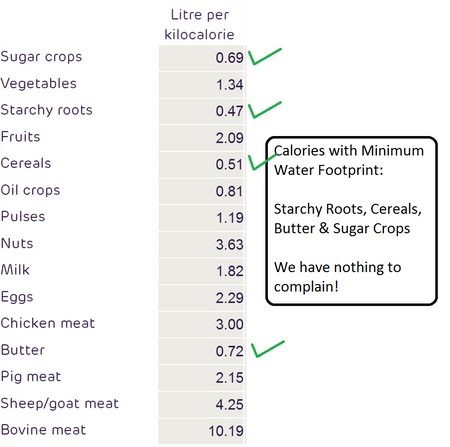The projected increase in the production and consumption of animal products is likely to put further pressure on the globe’s freshwater resources. Let us understand ancient India’s eating habits and what it costed, water wise. Excerpts are from the publication – Mekonnen, M.M. and Hoekstra, A.Y. (2010) The green, blue and grey water footprint of farm animals and animal products, Value of Water Research Report Series No. 48, UNESCO-IHE, Delft, the Netherlands.

1. By declaring “Cow as Holy” ancient Indians cleverly reduced beef and hence their water footprint “The study shows that the water footprint of meat from beef cattle (15400 m3 /ton as a global average) is much larger than the footprints of meat from sheep (10400 m3 /ton), pig (6000 m3 /ton), goat (5500 m3 /ton) or chicken (4300 m3 /ton)”. Graph below shows the water footprint (WF) category wise. Clearly, milk is a better utilization of cattle than beef.

They acknowledged the bigger role of cow as growing food for humans, not as human food! 2. Dal or pulses are a staple in every Indian household. They have been water-wise, in choosing their protein.

The statistics show that it takes only 19 litre water to obtain a gram of protein from pulses, whereas it takes 112 litres if we were to obtain the same 1 gram protein from beef! 3. Indians Chose Their Oils wisely – Butter or Oil seeds are water-wise alternatives to vegetable oils or animal fat. Ghee and Ghani (cold pressed oil seeds) are traditional Indian oils, never mind the recent dalda and olive oil fad.

The statistics show that it takes only 11 litre of water to produce 1 gm of fat from oil seeds and only 6.4 litre of water to produce 1 gm of butter! It takes a massive 153 litres of water to produce 1 gm of fat from cattle or vegetables! 4. Indians watched their calories too – Sugars, Cereals, Butter are tasty calories with minimal environmental impact – finds its use in maximum Indian recipes. More than milk, buttermilk (after churning out butter) was and continues to be a staple in Indian households, across states. Buttermilk is known as Chach, Takra, Mattha, Majigge in different parts of India and is an ancient superfood full of probiotics.

5. The world has a lot to learn and more importantly adopt from the ancient Indian civilization – This study provides a rich data on the factors that determine how different animal (and food) products put pressure on the global water resources. What the world chooses to eat, surely impacts what is grown/raised for food. Choose your food, water-wisely!
